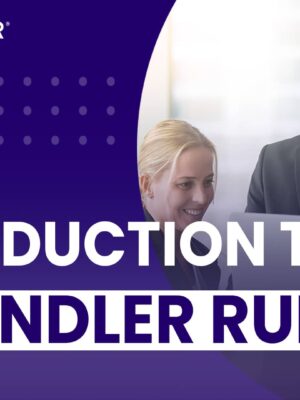Leadership for Organizational Excellence

Leadership for Organizational Excellence
The road to organizational excellence starts here.
The Blind Spots Syndrome
Even one of these 13 blind spots can kill or seriously damage an otherwise healthy business!
Too many leaders don’t know what they don’t know and are not interested in finding out. However, there are predictable ways that blind spots develop and how they can be mitigated. Much like driving a car, you can’t be effective with large, dangerous blind spots all around you.
[Video]
Leadership Blind Spot – Introduction
See more →
[Video]
Leadership Blind Spot – Not Having a Process for Hiring
See more →
[Video]
Leadership Blind Spot – Improperly Onboarding People
See more →
[Video]
Leadership Blind Spot – Failing to Tie Corporate Goals to Personal Goals
See more →
[Video]
Leadership Blind Spot – Not Creating a Culture of Accountability
See more →
[Video]
Leadership Blind Spot – No Common Sales Language
See more →
[Video]
Leadership Blind Spot – Not Focusing on Lead Generation
See more →
[Video]
Leadership Blind Spot – Not Capturing Best Practices
See more →
[Video]
Leadership Blind Spot – Failing to Train and Coach Management
See more →
[Video]
Leadership Blind Spot – Not Building the Bench
See more →
[Video]
Leadership Blind Spot – Not Knowing How to Coach
See more →
[Video]
Leadership Blind Spot – Not Sharing the Vision with Those Who Have to Implement it
See more →
[Video]
Leadership Blind Spot – Fostering a Culture of Learned Helplessness
See more →
[Video]
Leadership Blind Spot – No Methodologies and Systems
See more →
[Video]
Leadership Blind Spot – Conclusion
See more →
Take the Blind Spots Survey
A proven survey template designed to help you identify the professional blind spots that are keeping you from taking your company into the top tier!
TAKE THE SURVEY
Start Your Journey to Organizational Excellence by Removing Your Blind Spots
Sandler’s Leadership for Organizational Excellence is the antidote to blind spots, which sets your organization on the road with eyes wide open and keeps you moving forward toward success.
The key to overcoming these challenges is the proven leadership model of the six P’s.
Planning
- What are your personal priorities?
- Does your vision for the business support those priorities?
- What are your top three Key Priorities for the business?
Processes
- How should you document and formalize best practices into clear processes that people can and do follow?
- What processes need to be updated?
- What processes need to be created from scratch?
Positions
- What is the ideal organizational chart?
- What should the job descriptions say?
- What attitudes and habits do you not want in the organization?
Performetrics
- What kinds of tracking reports and dashboards should you use?
- How should you build performance metrics into specific job descriptions?
- How should you conduct performance appraisals?
People
- Which current employees will fit in immediately with the strategic plan?
- Which current employees might fit with some development?
- How do you recruit, hire, and retain talented people to fill the gaps?
Passion
- What will make the journey toward excellence a way of life — not just a short-term project?
- How do you sustain the energy and the drive needed to grow the business over time?
- How can you share your passion for what you do… so that others in the organization are motivated too?
Invest in yourself and the future success of your organization!
Approximately 50% of the people promoted to C-level positions of leadership within an organization perform at less-than-expected levels. The cross-functional team that you enroll in Leadership for Organizational Excellence will emerge unified, collaborative, and single-minded in purpose. They will achieve organizational breakthroughs that boost strategy, process, and execution.
The Road to Excellence
The best-selling book by Dave Mattson helps you determine what, exactly, stands between your company and organizational excellence – and what you can do about it.
Leadership Training Curriculum
Leadership for Organizational Excellence covers the 6 P’s and 24 Steps to Success. This curriculum is designed to be an intensive workshop, leading you through the completion of each of the 24 steps on the road to excellence. Leveling up is a choice and a process that can be mastered.
- STEP 1: Developing Your Personal Vision
- STEP 2: Building the Organizational Vision, Mission, and Values
- STEP 3: Analysis of External Environment
- STEP 4: SWOT Analysis
- STEP 5: Revisit Organizational Vision
- STEP 6: Identify Key Priorities
- STEP 7: Establish Expectations for Key Priorities
- STEP 8: Action Items, Due Dates, and Assignment of Responsibility
- STEP 9: Allocation of Resources to Accomplish Action Plans
- STEP 10: Regular Planning Review Process
- STEP 11: Determine the Structure Needed to Implement the Plan
- STEP 12: Identify Skill Sets and Other Attributes Needed for Each Function
- STEP 13: Create/Update Job Descriptions for Each Function
- STEP 14: Assess Current Employees to Determine Who Fits
- STEP 15: Determine New Employees Needed and Recruit
- STEP 16: Establish a Budget for Training and Development
- STEP 17: Create Individual Development Plans
- STEP 18: Evaluate and Revise Processes
- STEP 19: Establish Individual Metrics for Each Employee (Accountability)
- STEP 20: Conduct Regular Performance Appraisals/Evaluations
- STEP 21: Conduct Employee Surveys
- STEP 22: Create Tracking Reports to Maintain Control of the Business
- STEP 23: Monitor Board/Advisory Group Performance
- STEP 24: Acceleration
Crash a Class
Learn how Sandler trainers go “beyond the book” and implement ground-level solutions for your sales team to improve processes, personal performance, and results.







